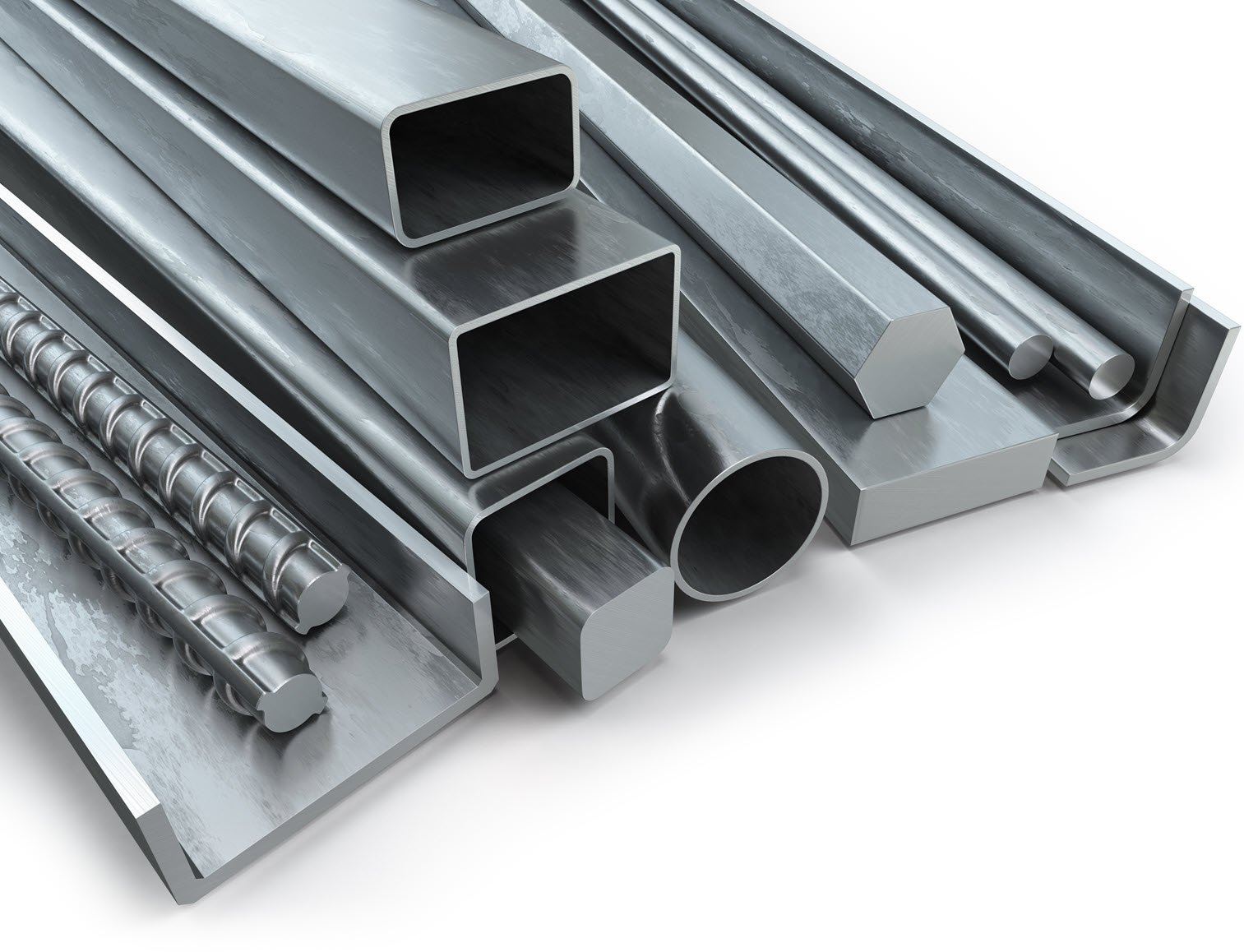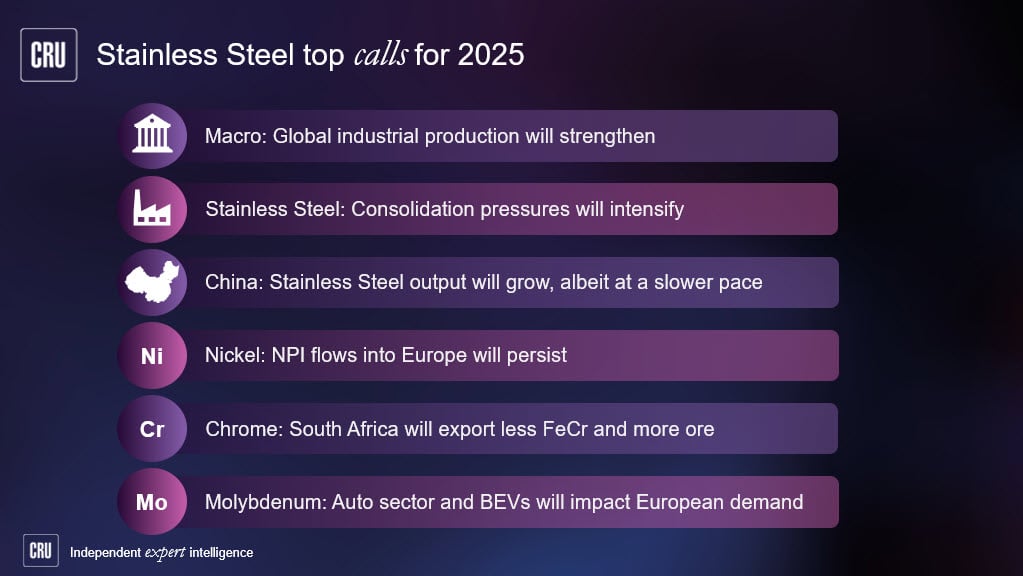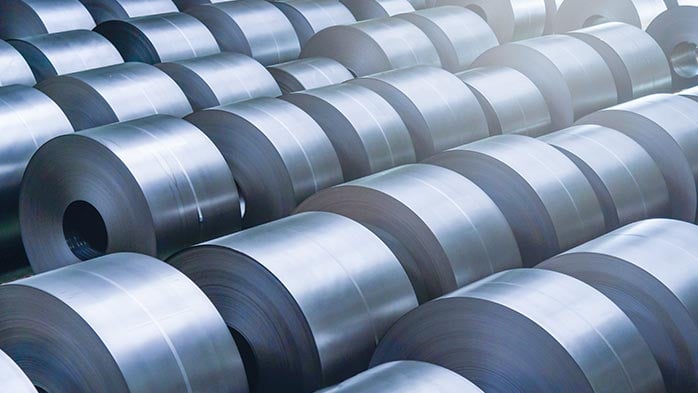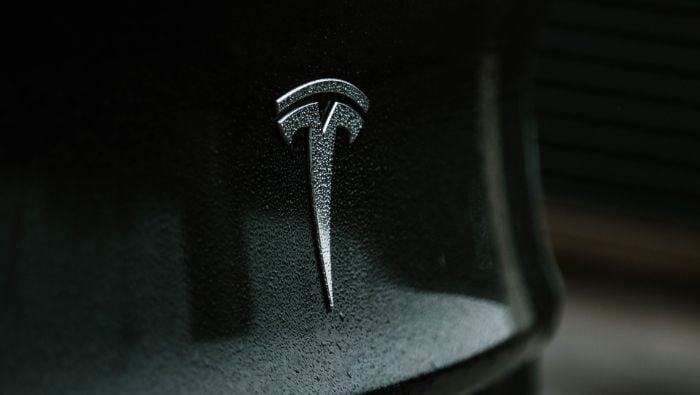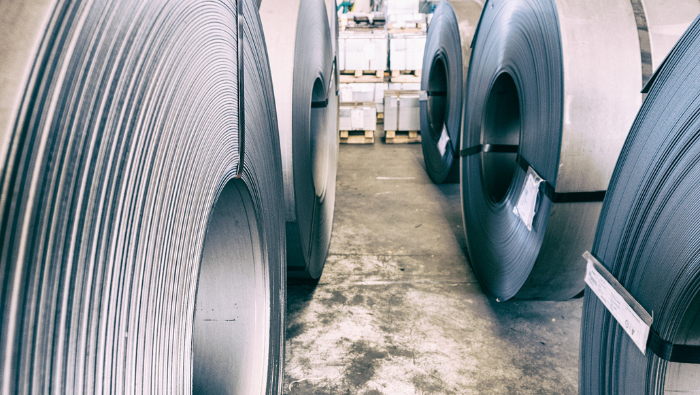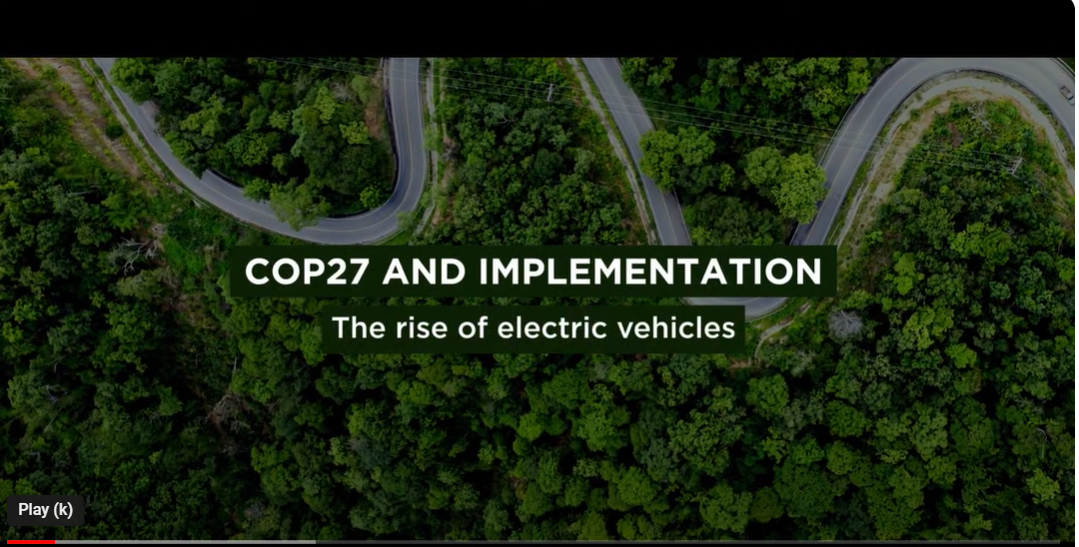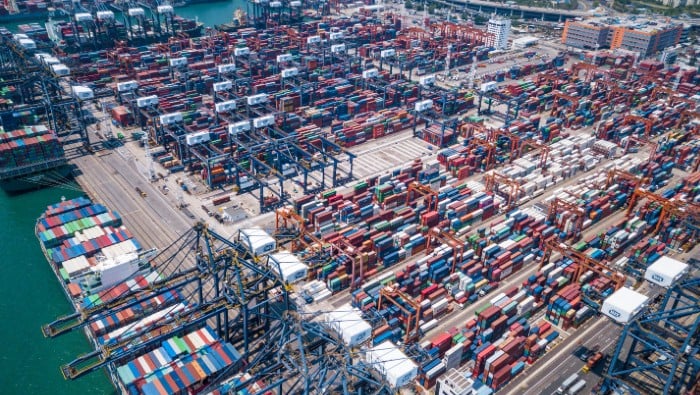This Insight presents CRU’s top calls for the stainless steel value chain in 2024. As supply chains, prices and profitability return to normality, we look into what the macroeconomic environment means for stainless steel demand, and how key themes shape the stainless market. We also provide our top expectations for the nickel, chrome, and molybdenum markets for the year ahead. Raw material prices in 2024 will be lower than in the previous year, with some of the factors dictating them being briefly discussed in this Insight.
1. Macro environment will become more supportive
While global economic growth will remain below trend in 2024, it will become more commodity-intensive, with industrial production growth accelerating, relative to 2023. With the post-Covid swing in consumer demand from goods to services easing, we expect demand for stainless-containing consumer products to be strong. This will also be supported by lower inflation. Indeed, inflation in the USA and the Eurozone will continue to fall, with the Federal Reserve and the European Central Bank expected to begin cutting interest rates in Q2.
2. Stainless market will see increasing regionalisation
The global stainless steel market will go through a period of increasing regionalisation and domestic protectionism. If not supported by a strong demand recovery in major stainless-exporting Asian countries, key markets elsewhere will maintain regional pricing premiums. In the meantime, capital allocation in the stainless steel sector will favour the US market due to higher margins. Recently announced plans from North American Stainless and Outokumpu exemplify that. Elsewhere, the investment attractiveness of high-volume, low-margin Asian markets is likely to fade, with some assets possibly changing hands.
3. Nickel inventories will keep rising
The global nickel market is heading for another large surplus in 2024 without substantial cuts in supply, especially in class 2 production. Thus, nickel prices may need to decrease to rebalance the market. We expect the surplus in class 1 to persist into 2024, and therefore visible inventories should continue to rise on both the LME and SHFE. While inventories have risen, they currently remain low by historical standards. Following a nearly 50% decline in LME nickel prices in 2023, the industry will pay attention to inventory movements as well as where prices stand relative to costs.
4. Ferrochrome smelter costs in China to decline
The weighted average cost of production of high-carbon ferrochrome in China will soften notably over the course of 2024, putting pressure on global spot prices. Meanwhile, increased regionalisation in the stainless steel industry and the Carbon Border Adjustment Mechanism will work to prevent the price differential between Chinese and European spot prices for high-carbon ferrochrome returning completely to historical levels. However, we do expect the differential to soften in 2024.
5. Molybdenum project delays pose upside risk to prices
As of late, a key theme in the molybdenum market has been short-term project delays. Indeed, delays in molybdenum supply from Quebrada Blanca 2 and Cobre Panama will prevent the accumulation of surpluses and could lead to short squeezes in what is expected to be a finely balanced market. In addition, following an illiquid spot market environment in 2023, spot demand is expected to improve in 2024 as buyers have secured less material on long-term contracts.
Click here or below to enlarge the image






